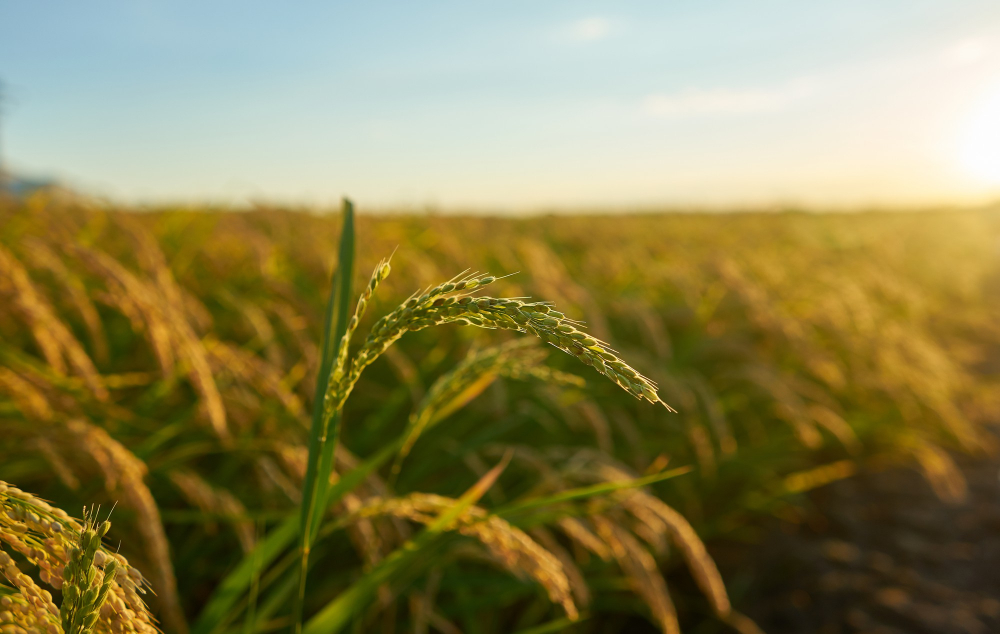In the realm of modern agriculture, precision agriculture techniques have revolutionized traditional farming practices by leveraging advanced technologies to optimize resource allocation, improve crop productivity, and minimize environmental impacts. Field management systems equipped with precision agriculture tools enable farmers to make data-driven decisions tailored to the specific needs of their crops and fields. This article explores the role of precision agriculture techniques in field management system, focusing on their applications, benefits, and contributions to optimizing resource allocation, with a particular emphasis on kharif crops.
Understanding Precision Agriculture in Field Management Systems
Precision agriculture, often referred to as smart farming or digital agriculture, involves the use of technology and data-driven approaches to manage agricultural practices with a high degree of precision and efficiency. At the core of precision agriculture is the concept of site-specific management, which entails tailoring inputs such as water, fertilizers, pesticides, and seeds to the unique characteristics of individual fields or crop zones. Field management systems integrate a variety of tools and technologies to enable precision agriculture practices, including remote sensing, GPS guidance systems, IoT sensors, and data analytics platforms.
Applications of Precision Agriculture Techniques in Kharif Crop Management
Kharif crops, cultivated during the monsoon season in regions with a tropical climate, represent a significant component of agricultural production in countries such as India. Precision agriculture techniques offer several applications for optimizing resource allocation and enhancing productivity in kharif crop management:
1. Variable Rate Application (VRA) of Inputs: Precision agriculture enables farmers to apply inputs such as fertilizers, pesticides, and irrigation water at variable rates based on spatial variability in soil properties, crop requirements, and environmental conditions. By using VRA technology, farmers can optimize input use efficiency, minimize input wastage, and reduce production costs while maximizing yields and profitability.
2. Site-Specific Irrigation Management: Water is a critical input in kharif crop cultivation, and efficient irrigation management is essential for ensuring optimal crop growth and water use efficiency. Precision agriculture tools, such as soil moisture sensors, weather stations, and remote sensing imagery, enable farmers to monitor soil moisture levels, crop water requirements, and field conditions in real time. By adopting site-specific irrigation strategies, farmers can apply water where and when it is needed most, minimizing water stress and maximizing crop yields.
3. Precision Seeding and Planting: Achieving uniform crop stand establishment is crucial for kharif crops such as rice, maize, and cotton. Precision agriculture techniques enable farmers to optimize seeding and planting operations by adjusting seeding rates, row spacing, and planting depths according to soil conditions, field topography, and crop requirements. This ensures optimal plant density, spacing, and uniformity, leading to improved crop emergence, vigor, and yield potential.
4. Crop Health Monitoring and Pest Management: Precision agriculture facilitates early detection and management of pests, diseases, and other crop stresses through remote sensing, sensor networks, and data analytics. By monitoring crop health indicators such as vegetation indices, canopy temperature, and spectral signatures, farmers can identify pest outbreaks, disease hotspots, and nutrient deficiencies in kharif crops. This enables timely interventions, such as targeted pesticide applications, cultural practices, and nutrient supplementation, to mitigate crop losses and maintain yield potential.
5. Yield Mapping and Performance Analysis: Precision agriculture enables farmers to assess crop performance and variability across fields through yield mapping and performance analysis. By integrating data from harvesters, GPS receivers, and yield monitors, farmers can generate spatially explicit maps of crop yields, quality, and variability. These maps provide valuable insights into yield-limiting factors, production trends, and field variability, informing future management decisions and agronomic practices for kharif crops.
Benefits of Precision Agriculture in Kharif Crop Management
1. Increased Productivity: Precision agriculture techniques help maximize the productivity and profitability of kharif crops by optimizing input use efficiency, minimizing crop losses, and improving yield potential. By tailoring inputs to the specific needs of crops and fields, farmers can achieve higher yields and quality while reducing production costs and environmental impacts.
2. Resource Efficiency: Precision agriculture enables efficient use of resources such as water, fertilizers, and pesticides, minimizing waste and environmental pollution. By applying inputs only where and when they are needed, farmers can conserve resources, reduce input costs, and enhance sustainability in kharif crop cultivation.
3. Risk Mitigation: Precision agriculture allows farmers to mitigate production risks associated with weather variability, pest outbreaks, and market fluctuations. By adopting data-driven management practices and decision support tools, farmers can proactively manage risks, optimize resource allocation, and improve resilience to climate-related challenges in kharif crop production.
4. Environmental Sustainability: Precision agriculture promotes environmental sustainability by reducing the use of agrochemicals, conserving natural resources, and minimizing greenhouse gas emissions. By adopting precision irrigation, nutrient management, and pest control practices, farmers can minimize their environmental footprint and contribute to sustainable agriculture practices in kharif crop cultivation.
Challenges and Considerations
While precision agriculture offers numerous benefits for kharif crop management, it also presents certain challenges and considerations:
1. Technological Adoption and Access: Adoption of precision agriculture technologies may be limited by factors such as cost, infrastructure, and technical expertise. Farmers need access to affordable and user-friendly technologies, as well as training and support services, to fully realize the potential of precision agriculture in kharif crop cultivation.
2. Data Management and Integration: Precision agriculture relies on the collection, analysis, and interpretation of large volumes of data from multiple sources. Effective data management and integration are essential for ensuring data quality, interoperability, and usability in decision-making processes for kharif crops.
3. Regulatory and Policy Frameworks: Regulatory frameworks and policies governing the use of precision agriculture technologies may vary across regions and countries. Farmers need clear guidelines and incentives to adopt precision agriculture practices and comply with regulatory requirements in kharif crop production.
4. Social and Behavioral Factors: Adoption of precision agriculture may be influenced by social, cultural, and behavioral factors among farmers and stakeholders. Education, outreach, and awareness-building efforts are needed to promote the adoption of precision agriculture techniques and foster a supportive ecosystem for kharif crop management.
Future Directions and Innovations
As technology continues to evolve and agricultural challenges persist, there is growing potential for innovation and advancement in precision agriculture techniques for kharif crop management:
1. Advanced Sensing Technologies: Advancements in sensor technologies, including hyperspectral imaging, drone-based sensors, and IoT devices, offer new opportunities for collecting high-resolution, multi-dimensional data for kharif crop monitoring and management.
2. Artificial Intelligence and Machine Learning: Integration of AI and machine learning algorithms enables automated data analysis, predictive modeling, and decision support in precision agriculture. By leveraging AI-driven approaches, farmers can extract valuable insights from complex datasets and optimize management practices for kharif crops.
3. Blockchain and Digital Platforms: Blockchain technology and digital platforms offer secure and transparent data sharing, traceability, and transactional capabilities for supply chain management in kharif crop production. By leveraging blockchain-based solutions, farmers can improve transparency, traceability, and trust in agricultural markets and value chains.
4. Climate Smart Agriculture: Climate smart agriculture approaches integrate precision agriculture techniques with climate adaptation and mitigation strategies to enhance resilience and sustainability in kharif crop cultivation. By adopting climate-smart practices, farmers can minimize risks, improve productivity, and contribute to climate change mitigation and adaptation efforts in agriculture.
Conclusion
Precision agriculture techniques play a vital role in optimizing resource allocation, improving productivity, and enhancing sustainability in kharif crop management. By leveraging advanced technologies such as remote sensing, IoT sensors, and data analytics, farmers can make informed decisions tailored to the specific needs of their crops and fields. Precision agriculture offers numerous benefits, including increased productivity, resource efficiency, risk mitigation, and environmental sustainability, contributing to a more resilient and sustainable agricultural future for kharif crop production. As technology continues to advance and agricultural challenges evolve, ongoing innovation and collaboration in precision agriculture will be essential for addressing emerging challenges and maximizing the potential of kharif crops to feed a growing global population.



